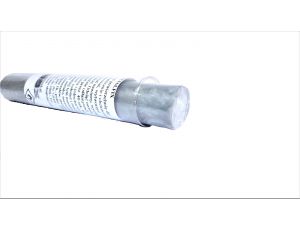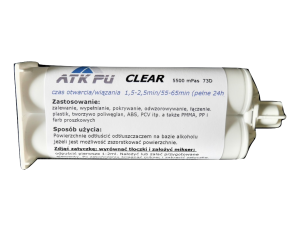aluminum adhesives
Gluing aluminum is not the same as steel, because it is a more difficult substrate due to the rapid oxidation of this metal and additionally has a lower surface tension. However, we have proven products for the most common material configurations. Below are specific cases. Structural bonding - the most important thing is that the product is as strong as possible, i.e. it is often joining or instead of welding, riveting or screws. Here, only the choice between Acralock SA 1-15 and EP61. It is important whether the color of the glue is important, and in the case of the latter, the open time is long. aluminum+ steel - bonding due to different expansion of materials. While for small areas you can use the above products, for larger areas we recommend versions with 120% expansion, i.e. SA 10-15, or in extreme cases GB 10-10 (up to 400%). Repair of cracks, holes and holes in engines, oil pans, barrels and broken threads - we glue with Kemiskit AL21 liquid high-temperature metal. After setting, the surface can be re-threaded or sanded, and you can even sink the mesh during application to reinforce the whole structure. If you want to glue large surfaces of aluminum sheets with angles or other supports, choose GB 10-10 or ATK 812 (more in the sheet adhesives section). Gluing polystyrene with aluminum as a soundproofing, insulation, etc. you use ATK PU 021 spreading over the whole or ATK 812 linearly even in vertical positions. Alu+ other materials - where the aesthetics of the connection is the most important, i.e. transparent glue - 2-3 versions. Best start with PU CLEAR or kemispox N11 and for plexiglass connections we also use CC 10-12 and UV. Is it possible to glue powder coated aluminum? Yes, there is no problem with that, in such cases we choose from three adhesives: SA 10-15, GB 10-10 or ATK 812 and on small and large surfaces. Aluminum versus duralumin and aluminum alloys - what's the difference? It should be remembered that there are many different versions, although in most cases they do not significantly affect the gluing, unless they are the so-called "metal crap" in which even the manufacturer does not know what's inside, then tests should be done if the connectors are to be responsible. Preparation of the aluminum substrate for gluing. Always degrease the element at the beginning, then only sand it and degrease it again. In places where we cannot grind, use a special AP-1 etchant instead, which will clean better than a degreaser (remember to always test this combination and which steps are required). Sandblasting and shot blasting are also used in the production processes. Also remember to stick to raw aluminum, if possible, and not to the painted surface or to another layer, because the forces achieved will only be those when the intermediate layer is well bonded.









